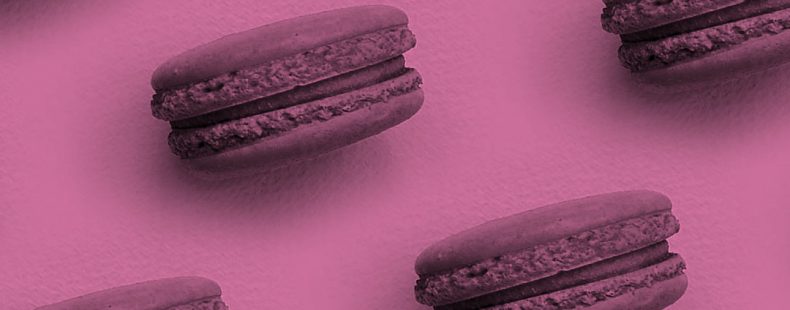If you’re a dessert lover, there’s a good chance that you enjoy both a rich coconut cluster cookie as well as a delicate almond cookie with a buttercream center. But which of these treats is a macaroon and which is a macaron? And did you know they were two different, albeit delicious, things?
Although most foodies know the difference between these beloved cookies, many people get the two words confused, and with good reason—both words describe a sweet treat with a similar spelling and have the same origin.
What does macaroon mean?
A macaroon is a noun that means “a drop cookie made of egg whites, sugar, usually almond paste or coconut, and sometimes a little flour.” Most common macaroon recipes also add sweetened condensed milk. For an extra touch of deliciousness, the coconut clusters can also be dipped in chocolate before they’re served.
Macaroons aren’t necessarily pretty—visually, these cookies have a chunky consistency spooned into a rough mound.
The first recorded use of macaroon was in 1605–15, and it originated from the Middle French word macaron via the dialectal Italian maccarone (“cake or biscuit made of ground almonds”). So the macaroon comes from the French version of a cookie that originated from an Italian treat. Hungry yet?!
What does macaron mean?
Next up is a different but equally delicious dessert: the macaron. This noun is what most think of when talking about traditional French macarons and is defined as a “round, colored cookie consisting of a ganache or buttercream filling between two halves made from beaten egg whites mixed with sugar and ground almonds.” Each half of the cookie is similar to a meringue in that it’s light, airy, and fragile. They’re joined with a center layer of indulgent filling, creating a swoon-worthy, meringue-like sandwich.
These sandwich cookies can come in a range of colors and flavors and are both more delicate as well as more difficult to make than macaroons. There are hundreds of different flavor combinations available and for those with allergies, they can be made gluten- and dairy-free. Macarons are usually very sweet, as they often contain powdered sugar or confectioners’ sugar.
Macarons are the French adaptation of the Italian macaroon, and according to Food Network, they were first created in France after the King’s Italian wife brought over a chef from Italy. Therefore they can be traced back to the same origin: that Italian maccarone “cake or biscuit.”
Both cookies utilize similar ingredients including egg whites and sugar, ground almonds or almond flour, and possibly shredded coconut.
How to use each word
One way to keep these cookies straight is to remember this trick: macaroons have two Os and contain coconut (also with two Os). For example: given how much mom loves chocolate-dipped macaroons, it’s no surprise that Samoas are her favorite Girl Scouts cookies.
Fun fact: coconut macaroons are a popular Passover dessert because they can be baked without flour, making them an unleavened cookie that doesn’t require yeast.
Macarons tend to be more expensive than macaroons at bakeries because of how fragile the meringue-like disks are and the skill required to make them. Here’s an example: the first thing she always does when visiting New York City is to stop at Ladurée to buy raspberry and chocolate macarons that taste like she’s in Paris.
No matter which cookie is your favorite, both are sweet and delicious with very similar (and confusing) names.














